My Dog Won’t Come Inside (Help!)
Every dog parent knows the feeling of hollering for your pooch in vain. Your voice lands on deaf ears and your cheeky bugger of a dog continues to go about his doggy life, ignoring your calls.
URGH. There’s nothing worse than a dog that simply won’t listen.

Why do your four-legged pals ignore your calls to bring themselves inside? To figure out how to get them to come inside, we’ll have to examine the reasons why your dog wants to be outside in the first place. In this blog post, we’ll look at the various reasons why your dog refuses to go in with you and what you can do about it.
Why Does My Dog Refuse To Come Inside?
Most dogs naturally like being outdoors. The yard, where they have ample room to run and play, is often their playground.
However, if your fur baby has suddenly stopped coming inside when called, there are a few reasons that this might be happening and a few things that you can do to fix it.
1. Exploring New Settings
Is your dog new to his environment? If you’ve recently moved, or if something is going on with your yard, your dog might be busy exploring his new surroundings and want to spend as much time as they can to check it out.
Even if your dog is extremely attached to you, nothing beats a new place with all those exciting new smells! Once your dog is done checking out his new digs, he’ll go indoors to sleep.
How To Deal With It?
Of course, you might not have the time to wait around for him to get tired of his surroundings. In which case, some obedience training and reinforcement are needed to solidify his recall skills.
You can practice the recall in the yard, allowing you to spend more quality time with your buddy and occupy his attention more than the squirrel dashing across the street.
On the final recall, simply call him indoors, and reward him handsomely if he does so.
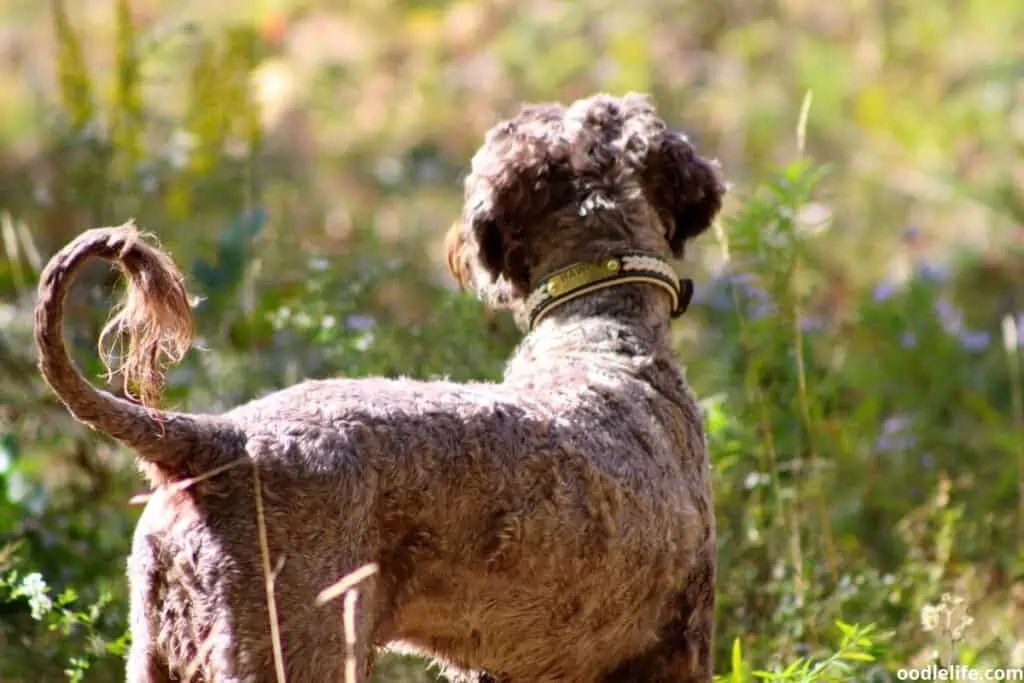
2. New Dog?
It is normal for a new dog to be wary of a new environment, especially if the dog is from a shelter or rescue organization.
While puppies tend to be innocent little things with no such qualms, some adult dogs might have their suspicions of going into a home with a new person.
Maybe they were scared of being touched, or they bark and growl whenever someone new came into the room. These dogs often have what is known as trust issues. Trust issues can be caused by a variety of factors, including abuse, neglect, or even just a lack of socialization.
Whatever the cause, it’s important to remember that trust issues are not permanent. With patience, love, and a little professional help, even the wariest dog can learn to enjoy human companionship once again.
How To Deal With It?
Whatever you do, don’t attempt to catch him and drag your dog inside. This will further build distrust and could seriously hurt your relationship.
Start by calling your dog and throwing treats in his general vicinity. No matter what your dog does, keep backing up in the direction of the door rather than attempting to approach him.
Your dog will eventually feel secure enough to approach you and accept treats. In which case, you can slowly lure or bribe him to go into the home.
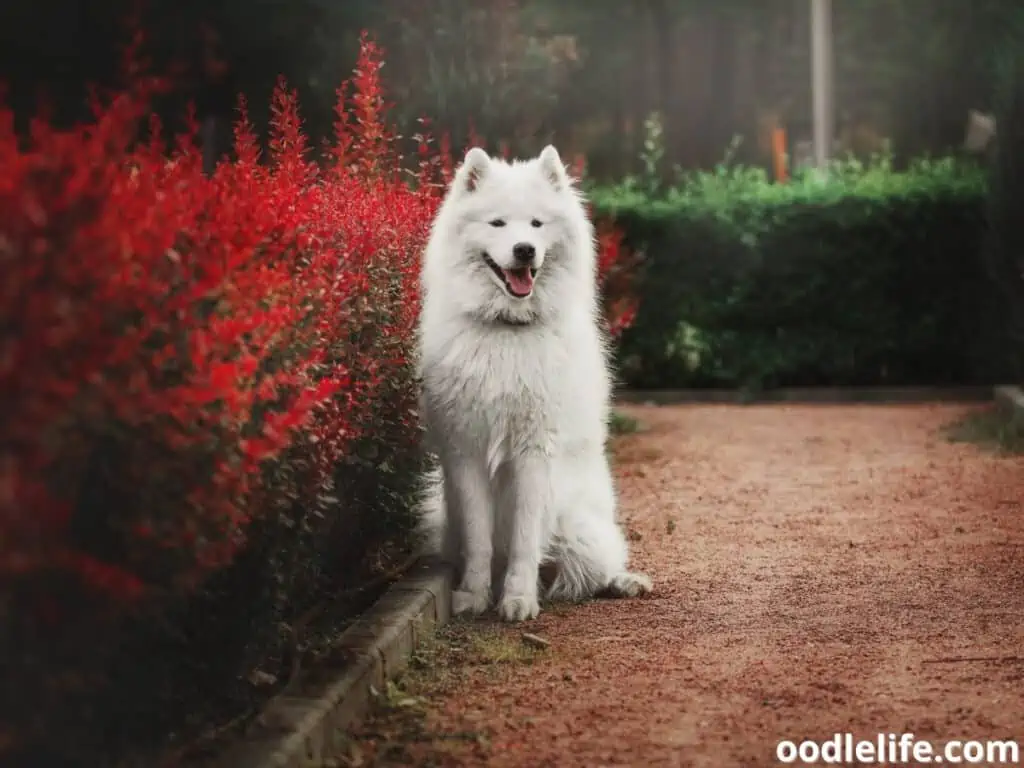
3. Outside Is More Fun!
If your dog spends most of its time outside, he will eventually prefer the outside to the interior. Outside is definitely more interesting, with all the different scents, sounds, and visuals. It is also way more space to romp around.
He may start to see the yard as his personal playground, and the indoors as only a place to sleep and eat.
How To Fix It?
First, make sure your dog has enough exercise so that he will be more than happy to hit the hay when it is bedtime. Since not all dogs are the same in terms of their degree of activity, it can be challenging to determine how much daily outside exercise your dog needs.
In general, dogs need between 30 and 60 minutes of physical activity daily, although working breeds with high levels of energy will require more.
Simply allowing your dog to spend more fun times indoors will most effectively address this issue, as well as make sure that their indoor time is at least as enjoyable as their outdoor time.
When they enter the house, they’ll be more interested in what’s going on if you have fun or play with them, offer them delicious treats, and lavish attention on them.
To keep your dog mentally engaged, try to play with them more indoors and give them puzzle toys. The objective is to demonstrate to your dog that indoor play is just as enjoyable as outdoor play.
They may eventually prefer to hang out with you inside rather than digging up your flower beds.
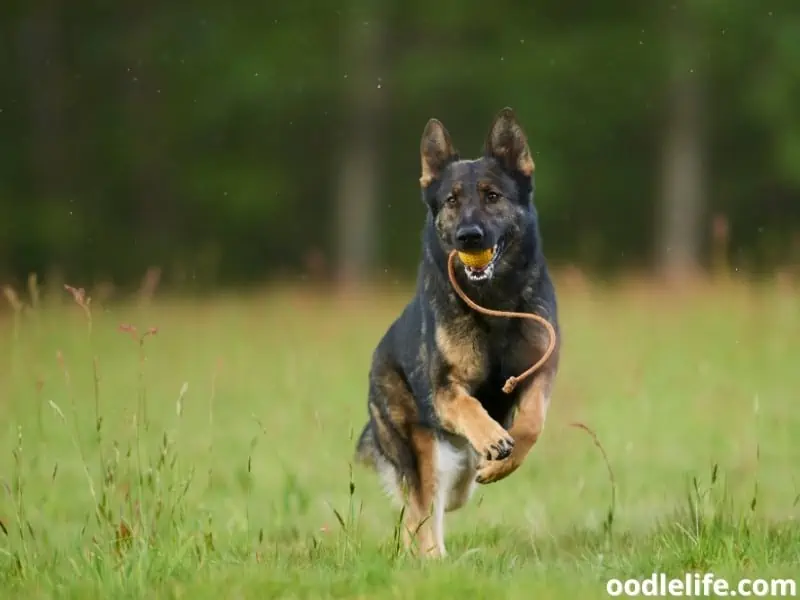
4. They Don’t Recall Well
The recall is the single most important thing that a dog has to know – to come when they are called. It not only makes life easier for both of you, but it also could save their life in the event of an emergency.
If your trained dog is failing to heed your call, it’s time to work on that recall.
How To Fix It?
Fortunately, there are a few simple steps you can take to teach your dog a reliable recall. First, choose a word or phrase like their name or “come,” to use as your recall command, and be consistent in using it every time.
Next, associate the command with something positive, like treats or playtime. Finally, begin practicing in low-distraction areas before moving on to more challenging environments.
With patience and perseverance, you can teach your dog an essential skill that will keep them safe for years to come.
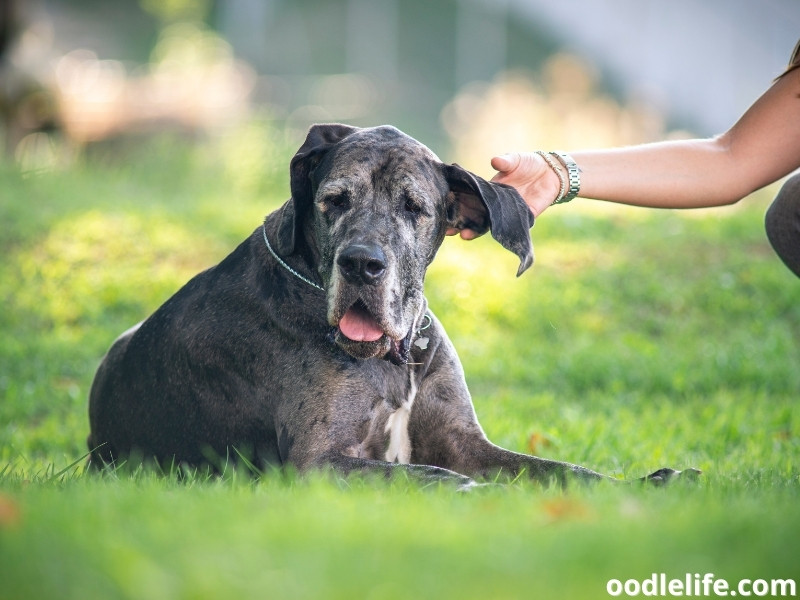
5. They Are Guarding
Some canines take the responsibility of serving as your security very seriously. They frequently think that the only thing preventing their families from impending danger is them and their fearsome barks.
These dogs may be too preoccupied keeping watch over the yard and barking at anything that moves.
You might just have a hyperactive, workaholic alert dog on your hands. While being alerted to things that are amiss is useful to some, to many others, incessant barking is a nuisance and can drive you (and your neighbors!) batty.
How To Fix It?
Here, training and socialization are your greatest ally. Your dog must understand that not all the things in the world are out to get them.
Dogs are natural guardians. It’s in their instincts to protect their pack — which, to them, includes you and your family.
The first step is to identify what’s triggering the guarding behavior. Is your dog reacting to people, other animals, or certain objects? Once you know the trigger, you can begin to work on counter-conditioning — changing your dog’s emotional response to the trigger.
If people are the problem, for example, have a friend approach your dog while you give him treats. The key is to make sure the treats come only when the person is around, so your dog associates the person with something positive.
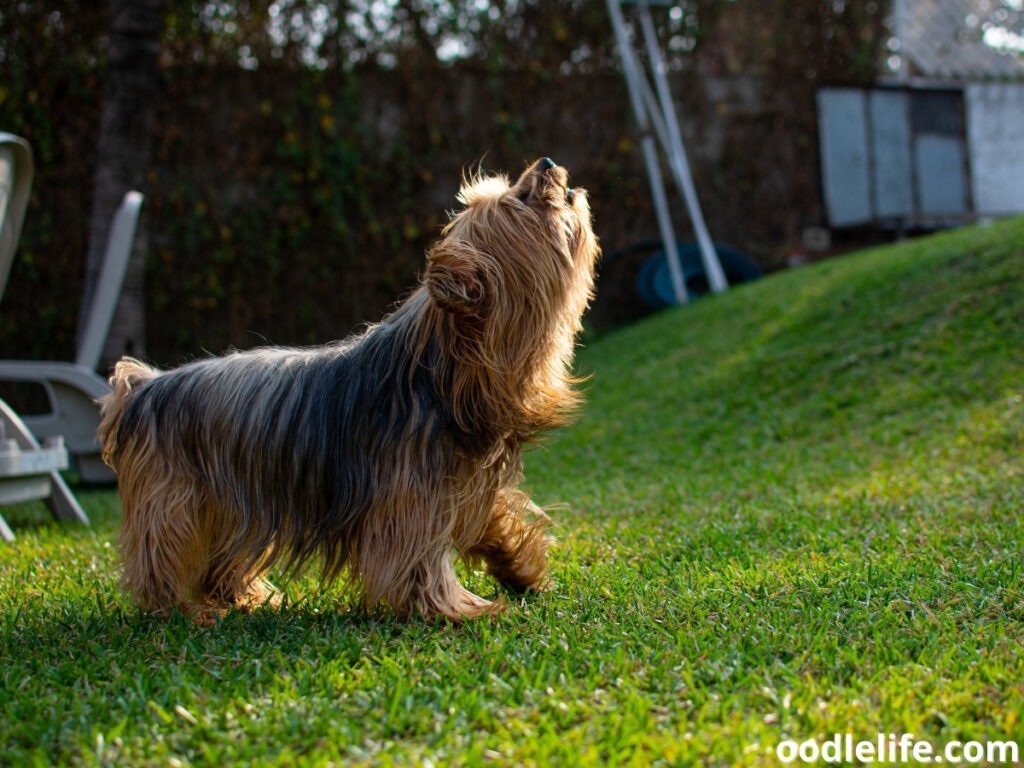
6. Temperature Control
Your home might be too hot or too cold for your dog. Dogs like the Siberian Husky prefer very cold temperatures, and if your home is too hot, your dog might rather bask outside in the cold.
Of course, some breeds are more resistant to heat than others, and older dogs or those with health problems may need to stay in warmer temperatures.
How To Fix It?
No one’s asking you to keep your home in sub-freezing temperatures, but just make sure that your home is appropriate for all of you.
While all dogs are different, the general rule of thumb is that the ideal temperature for dogs is between 70 and 80 degrees Fahrenheit.
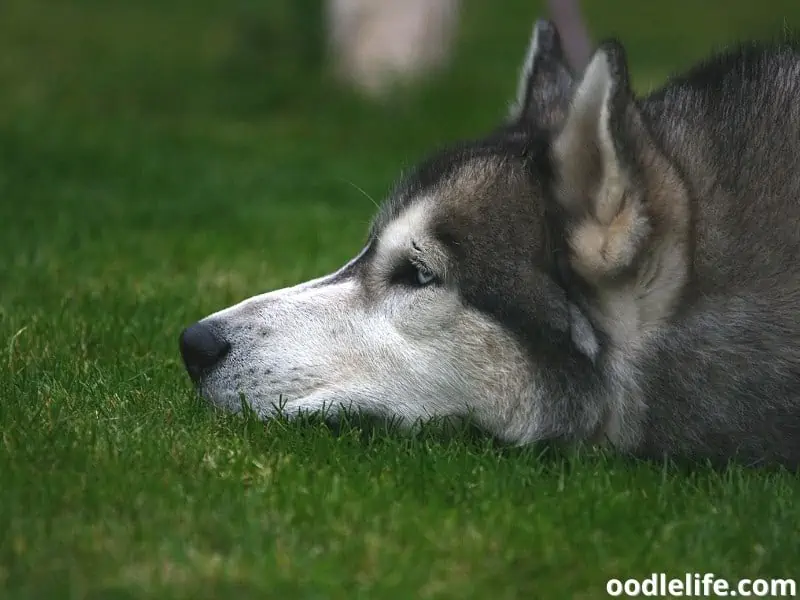
Things To Do With Your Dog Indoors
One of the reasons your dog might want to stay out is because he sees your home as a boring place. After all, the yard is where all the action happens! People pass by, other dogs walk by, and there are exciting smells and sounds everywhere.
You can spend some quality time with your dog indoors to help change his mind about the whole boring place thing. Here are a few things you can do:
- Play tug-of-war.
- Construct an indoor agility course.
- Practice some obedience training. This is a great time to work on that recall!
- Give your dog some treat-dispensing puzzle toys or other interactive toys.
- Set up a treat treasure hunt. Hide his treats in several places all around the home and watch your dog go crazy sniffing for them!
- Play hide and seek. Another great obedience training opportunity to practice the “sit-stay.”
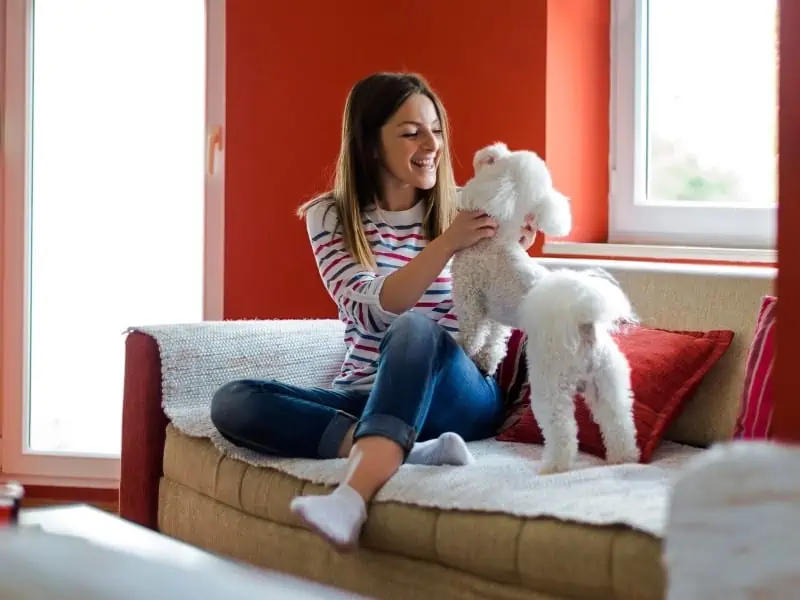
Final Thoughts
If your dog isn’t heeding your calls to go inside, don’t worry. More often than not, the cheeky bugger just wants more outdoor time. With a few tweaks, you can be sure that your dog will lope happily to you the next time you call!